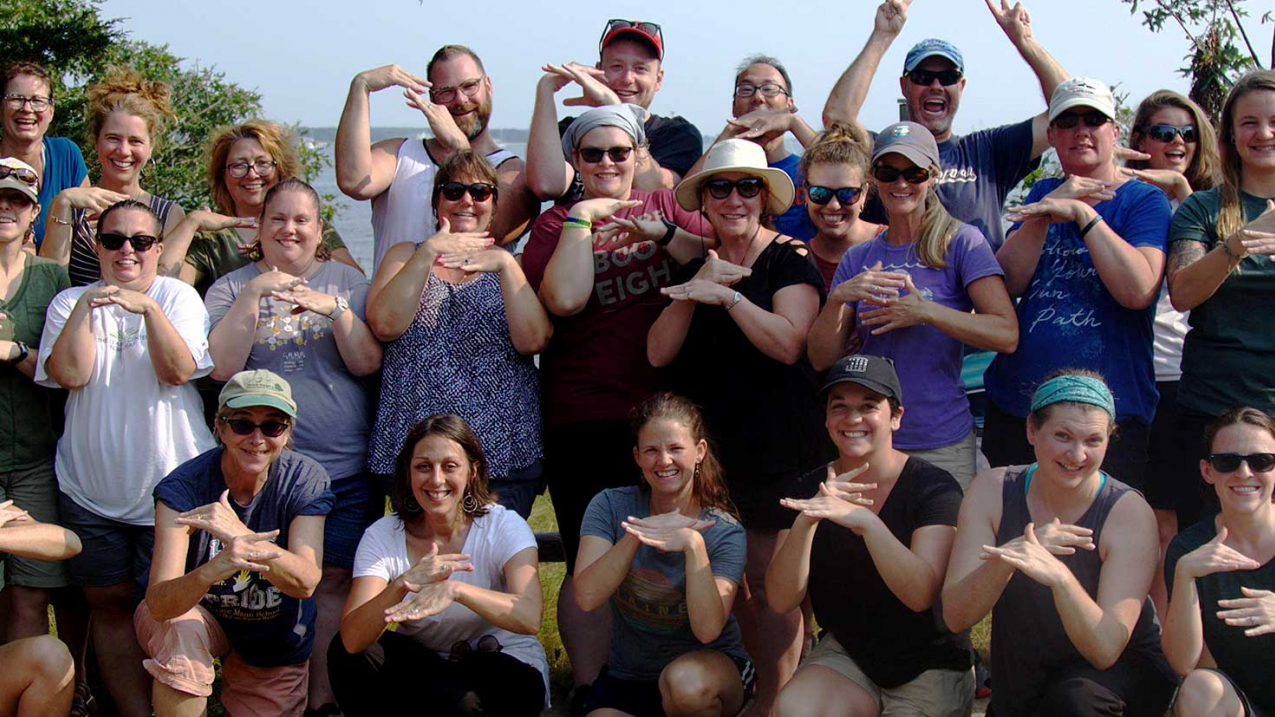Until recently, educators of the Deaf had limited resources for teaching about ecology. Not only were materials scarce, but American Sign Language (ASL) did not have a shared vocabulary for many ecological terms, including “estuary” and “watershed.” If members of the Deaf community wanted to discuss these concepts, they would generally fingerspell terms like “e-s-t-u-a-r-y” or “w-a-t-e-r-s-h-e-d,” a barrier that forced native ASL speakers to think in another language, English.

Attendees of a Teachers on the Estuary workshop at Waquoit Bay Reserve demonstrate the new American Sign Language sign for "estuary." The sign represents mixing between the river and the sea. (Image credit: James Rassman/Waquoit Bay National Estuarine Research Reserve)




